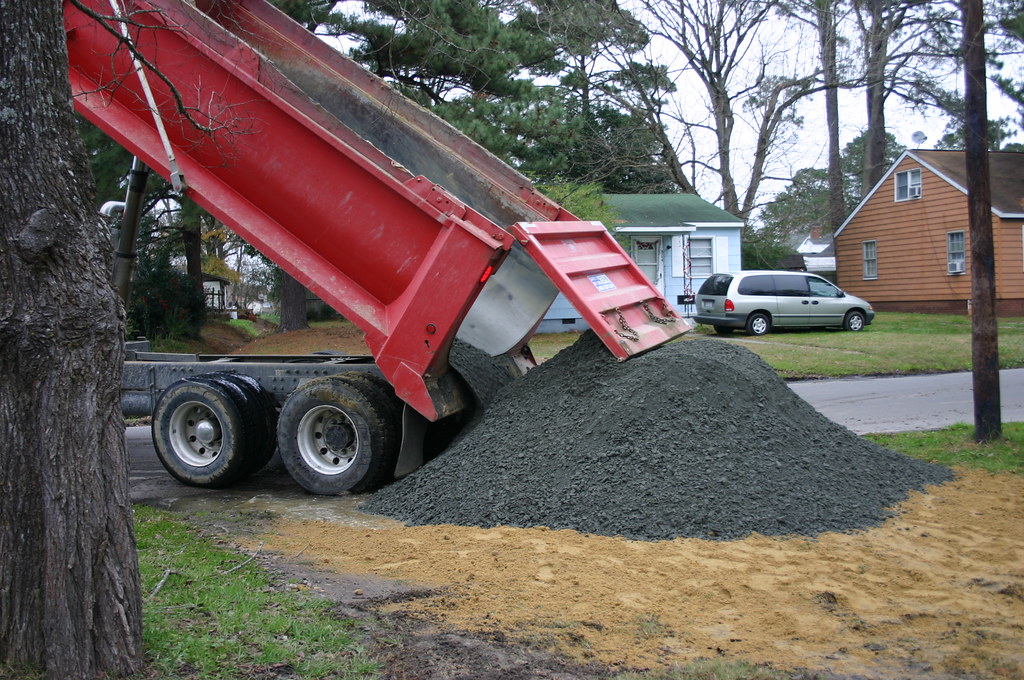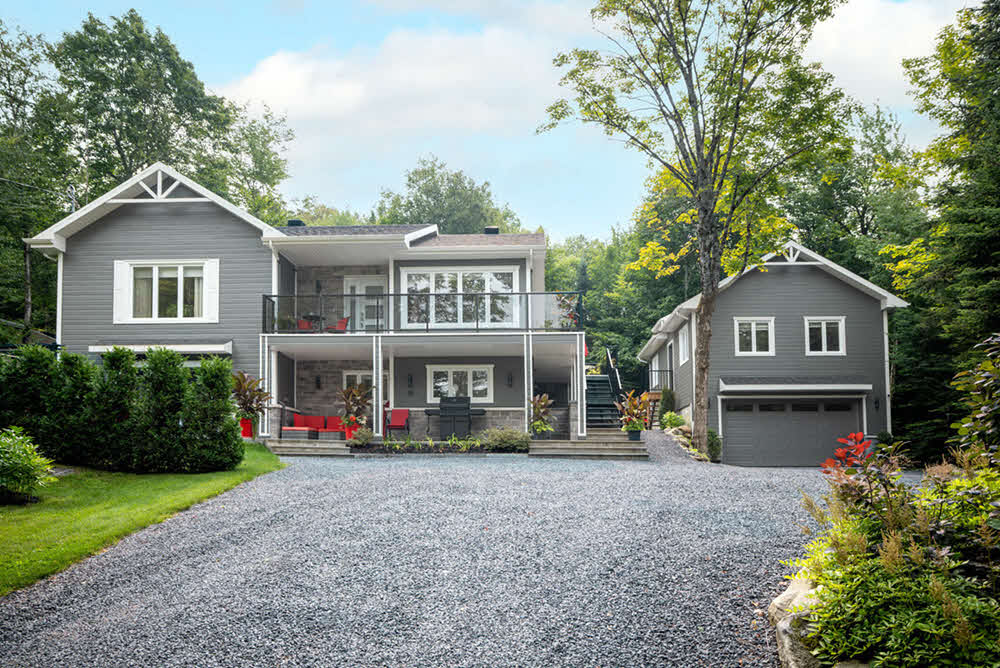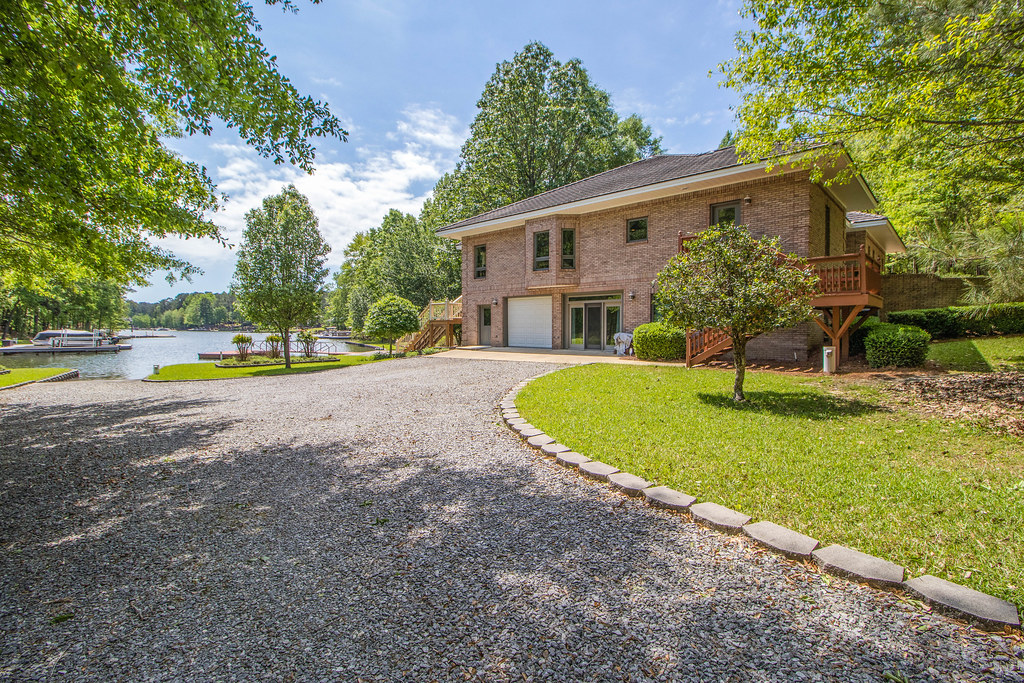Gravel Drivewaysin Lapeer MI
Expert Gravel Driveway Installation for Lasting Durability
We Are Locally Owned & Operated For Over 37 Years
Contact Us Today!
We Serve Businesses In And Around The Following Cities:
About Gravel Driveways
An Introduction to Gravel Driveways in Lapeer for Commercial Properties
In the flourishing city of Lapeer, the commercial
realm continually evolves, adding to the architectural charm of northern Michigan. Complementing this business growth, a key aspect that discerning property owners recognize is the profound importance of an inviting, well-built driveway. Among numerous options, one versatile choice stands out: the gravel driveway. The selection of a gravel driveway very much aligns with the rustic charm of Lapeer, whilst providing a cost-effective, low-maintenance solution for commercial properties.
The Process of Gravel Driveway Installation
Installing a gravel driveway is a comprehensive process that requires careful planning and execution. There are various steps involved which include excavating the driveway area, laying the landscape fabric if needed, and finally, pouring the chosen gravel material. Preparation is key when it comes to achieving a smooth, attractive, and durable gravel driveway.
Whether utilizing pea gravel, classic gray driveway gravel, or the popular black gravel driveway option, it’s crucial to partner with reliable gravel driveway contractors near you for proper installation. D&J Contracting, for instance, offers professional gravel driveway installation in Lapeer.
The Financial Implications of a Gravel Driveway
Concerning the average cost of gravel driveway installation, it’s worth noting that it is generally more affordable compared to alternatives such as asphalt or concrete. However, numerous elements impact the final expense. These factors encompass the driveway’s size, the type of gravel used, and the location. A well-constructed gravel driveway is a worthwhile investment that pays off through high durability and low-upkeep requirements. Gravel driveway resurfacing costs, for example, remain minimal in comparison to asphalt or concrete driveway maintenance costs.
Benefits and Real-World Applications of Gravel Driveways
Gravel driveways for commercial properties offer an array of benefits. First and foremost, they provide excellent traction, making them an ideal choice for winter months. Equally important, runoff is less of a concern due to the permeable nature of gravel, making it environmentally friendly.
Lapeer businesses have caught onto these benefits. For example, small businesses with limited parking spaces favor fine gravel driveways for their flexibility and ease of expansion if needed. Even large corporations have displayed a preference for gravel driveways as part of their eco-friendly initiatives. An edged gravel driveway, ornamental with attractive landscaping, often serves as an elegant entranceway for many reputable vineyards and farms in and around Lapeer.
Even in instances of heavy traffic leading to wear and tear, repairing a gravel driveway is not cumbersome. Services like gravel driveway leveling and filling gravel driveway potholes conducted by professionals like D&J Contracting ensure the driveway is back in optimal condition in no time.
Ensuring Your Gravel Driveway Remains a Prized Asset
Once the gravel driveway is installed, it’s vital to keep it well-maintained to ensure it remains appealing and serves its purpose efficiently. Whether it involves gravel driveway grading or even simple measures like removing weeds and filling any potholes promptly, a well-maintained driveway not only looks good but also increases the overall value of your commercial property.
When in need of professional services such as fixing potholes in a gravel driveway or looking for competent gravel driveway contractors near you, D&J Contracting is a name you can trust. Their unparalleled service and quality work have helped many businesses in Lapeer, distinguishing them from other gravel driveway companies.
Wrapping Up
In conclusion, while the choice of a driveway may seem like a small decision in the grand scheme of designing a commercial property, it significantly contributes to the property’s performance and aesthetic. A gravel driveway, with its rustic charm and functional benefits, is an excellent investment for commercial property owners in the city of Lapeer. However, it’s crucial to choose experienced professionals such as D&J Contracting for any driveway installation and maintenance needs to ensure value for your investment. With the right guidance and services, your gravel driveway will serve as a lasting, integral part of your commercial property’s appeal and functionality.
Gravel Driveways Gallery


Call Us Today to receive your Free Quote for
Gravel Driveway in Lapeer
Serving: Lapeer, Michigan

About Lapeer, Michigan
|
|
This section needs additional citations for verification. (January 2020)
|
By an ordinance of the Congress of the United States passed on July 13, 1787, the area lying northwest of the Ohio River, though still occupied by the British, was organized as the Northwest Territory. Lapeer County was once part of the Northwest Territory. In January 1820, the county of Oakland was formed, which served the area now known as Lapeer, until the County of Lapeer was formed in 1837, when Michigan became a state. The first elections were for county officers, with 520 persons voting in 1837.
Folklore claims Lapeer was derived from the naming of the south branch of the Flint River, which flows northwestward in Lapeer County. French and Indian traders frequently passed over this section of the county and through the river, ultimately naming the city for the stone that lay at the river bottom. In French, stone is called “la pierre”; the English pronunciation of these words gives Lapeer. The river was named Flint, synonymous with stone. (See List of Michigan county name etymologies.)
It is also believed that the first settlers who came from New York State may have brought the name Lapeer from a similarly named city in their home state. A third supposition is that French missionaries named the city Le Pere, meaning The Father.
The first settlers in Lapeer were a group of men named Alvin N. Hart, Oliver B. Hart, and J.B. Morse. The most prominent of the three, Alvin N. Hart, was born in Cornwall, Connecticut, on February 11, 1804. He came to Lapeer in 1831 and platted the Village of Lapeer, November 8, 1833. The plat was registered in Pontiac on December 14, 1833, in the County of Oakland; four years before Michigan became a state and Lapeer became a county. Alvin N. Hart became a State Senator in 1843, representing Lapeer, Oakland, Genesee, Shiawassee, Tuscola, Saginaw Counties and the entire Upper Peninsula. He was instrumental in having the State Capitol relocated from Detroit to Lansing. Hart died on August 22, 1874, and is buried in Lapeer.
The second group of settlers were Enoch J. White and his family. He was born in South Hadley, Massachusetts in 1814. He came to Lapeer in 1833. Of pioneer stock, Alvin N. Hart and Enoch J. White both had the initiative to start new communities. Mr. Hart formed Lapeer and Mr. White formed what was then known as Whitesville, which now consists of the western portion of Lapeer. A tamarack swamp once separated these two settlements.
Other distinguished natives include John T. Rich, former governor of the state of Michigan; Louis C. Cramton, special assistant to the U.S. Secretary of the Interior in 1931 and 1932. He led studies of the area around the Colorado River that led to the establishment of the first National Recreation Area, Lake Mead National Recreation Area; Charles Potter, whose son became a U.S. Senator; William Reed, Big Ten Football Commissioner; and Marguerite deAngeli, internationally known writer of children’s books.
At one time, there were two courthouses. The White family erected one at the present site of the Old Lapeer High School at Main and Genesee Streets, while the Hart family erected one at Nepessing and Court Streets. The Board of Supervisors purchased the Hart courthouse for $3,000, which is now the oldest continuously running courthouse in the state of Michigan and one of the oldest 10 courthouses in the United States. White’s courthouse later became the first school in Lapeer called Lapeer Academy.
Over time, it became evident that the business district would be near the Courthouse, so the city’s founders moved the Opera House piece-by-piece to its present location at the southeast corner of Court and Nepessing Streets in 1879. The building is now known as the White Block.
Lapeer’s first church was the Congregational Church; organized in 1833, the same year Lapeer was platted. The Methodist Episcopal Church opened its doors a year later, followed by the Baptist Church in 1858, the Immaculate Conception Catholic Church in 1866, the Universalist Church in 1873, the Methodist Protestant Church in 1877 and the Grace Episcopal Church in 1882.
Lumbering was the sole industry in the early days of Lapeer. The flourishing lumber business attracted the New York Central Railroad and Grand Trunk Railroad. Lapeer later became the intersection to two state trunk lines: M-21 and M-24. Industries today supply the automotive industry with gray iron casting, molded plastics, plastic fabrics, electrical harnesses and stamping.
On October 26, 2010, Lapeer became a founding member of the Karegnondi Water Authority.
On August 15, 2012, the fourth-largest Powerball jackpot was won from a ticket sold at a Sunoco station in Lapeer. The jackpot had an annuity value of $337 million.
According to the United States Census Bureau, the city has a total area of 7.38 square miles (19.11 km), of which 7.13 square miles (18.47 km) is land and 0.25 square miles (0.65 km) is water. It is considered to be part of the Thumb of Michigan, which in turn is a subregion of the Flint/Tri-Cities.
| Census | Pop. | Note | %± |
|---|---|---|---|
| 1870 | 1,772 | — | |
| 1880 | 2,911 | 64.3% | |
| 1890 | 2,753 | −5.4% | |
| 1900 | 3,297 | 19.8% | |
| 1910 | 3,946 | 19.7% | |
| 1920 | 4,723 | 19.7% | |
| 1930 | 5,008 | 6.0% | |
| 1940 | 5,365 | 7.1% | |
| 1950 | 6,143 | 14.5% | |
| 1960 | 6,160 | 0.3% | |
| 1970 | 6,314 | 2.5% | |
| 1980 | 6,198 | −1.8% | |
| 1990 | 7,759 | 25.2% | |
| 2000 | 9,072 | 16.9% | |
| 2010 | 8,841 | −2.5% | |
| 2020 | 9,023 | 2.1% | |
| U.S. Decennial Census 2010 2020 |
|||
As of the census of 2020, there were 9,023 people, 3,652 households, and 1,898 families living in the city. The population density was 1,201.5 inhabitants per square mile (463.9/km). There were 3,921 housing units at an average density of 522.1 per square mile (201.6/km). The racial makeup of the city was 81.7% White, 7.7% African American, 0.5% Native American, 0.7% Asian, 1.0% from other races, and 6.4% from two or more races. Hispanic or Latino of any race were 4.4% of the population.
There were 3,652 households, of which 22.3% had children under the age of 18 living with them, 31.5% were married couples living together, 39.9% had a female householder with no spouse present, 19.3% had a male householder with no spouse present, and 52.0% were non-families. 42.8% of all households were made up of individuals, and 17.7% had someone living alone who was 65 years of age or older. The average household size was 2.09 and the average family size was 2.79.
The median age in the city was 40.3 years. 18.3% of residents were under the age of 18; 10.7% were between the ages of 18 and 24; 26.2% were from 25 to 44; 29.8% were from 45 to 64; and 14.3% were 65 years of age or older. The gender makeup of the city was 53.6% male and 46.4% female.
As of the census of 2010, there were 8,841 people, 3,446 households, and 1,927 families living in the city. The population density was 1,240.0 inhabitants per square mile (478.8/km). There were 3,956 housing units at an average density of 554.8 per square mile (214.2/km). The racial makeup of the city was 88.6% White, 7.6% African American, 0.6% Native American, 0.8% Asian, 0.5% from other races, and 1.8% from two or more races. Hispanic or Latino of any race were 3.9% of the population.
There were 3,446 households, of which 32.6% had children under the age of 18 living with them, 32.1% were married couples living together, 18.3% had a female householder with no husband present, 5.5% had a male householder with no wife present, and 44.1% were non-families. 39.2% of all households were made up of individuals, and 15.6% had someone living alone who was 65 years of age or older. The average household size was 2.22 and the average family size was 2.97.
The median age in the city was 36 years. 24.1% of residents were under the age of 18; 11% were between the ages of 18 and 24; 27.2% were from 25 to 44; 24.2% were from 45 to 64; and 13.5% were 65 years of age or older. The gender makeup of the city was 51.5% male and 48.5% female.
As of the census of 2000, there were 9,072 people, 3,443 households, and 1,979 families living in the city. The population density was 1,635.5 inhabitants per square mile (631.5/km). There were 3,658 housing units at an average density of 659.5 per square mile (254.6/km). The racial makeup of the city was 89.91% White, 5.95% African American, 0.47% Native American, 0.57% Asian, 0.03% Pacific Islander, 1.09% from other races, and 1.96% from two or more races. Hispanic or Latino of any race were 3.33% of the population.
There were 3,443 households, out of which 33.0% had children under the age of 18 living with them, 38.3% were married couples living together, 15.7% had a female householder with no husband present, and 42.5% were non-families. 36.8% of all households were made up of individuals, and 14.2% had someone living alone who was 65 years of age or older. The average household size was 2.29 and the average family size was 3.02.
In the city, the population was spread out, with 24.6% under the age of 18, 9.9% from 18 to 24, 36.5% from 25 to 44, 17.1% from 45 to 64, and 11.9% who were 65 years of age or older. The median age was 33 years. For every 100 females, there were 106.8 males. For every 100 females age 18 and over, there were 110.6 males.
The median income for a household in the city was $35,526, and the median income for a family was $42,872. Males had a median income of $36,731 versus $24,552 for females. The per capita income for the city was $16,608. About 8.5% of families and 10.2% of the population were below the poverty line, including 12.3% of those under age 18 and 12.1% of those age 65 or over.
Call Us Today to receive your Free Quote for
Gravel Driveway in Lapeer
Related Services in Lapeer, Michigan
We Serve Businesses In The Following Zip Codes:
48007, 48015, 48021, 48026, 48035, 48036, 48038, 48042, 48043, 48044, 48045, 48046, 48047, 48048, 48050, 48051, 48066, 48071, 48080, 48081, 48082, 48083, 48084, 48085, 48088, 48089, 48090, 48091, 48092, 48093, 48098, 48099, 48225, 48230, 48236, 48310, 48311, 48312, 48313, 48314, 48315, 48316, 48317, 48318, 48397